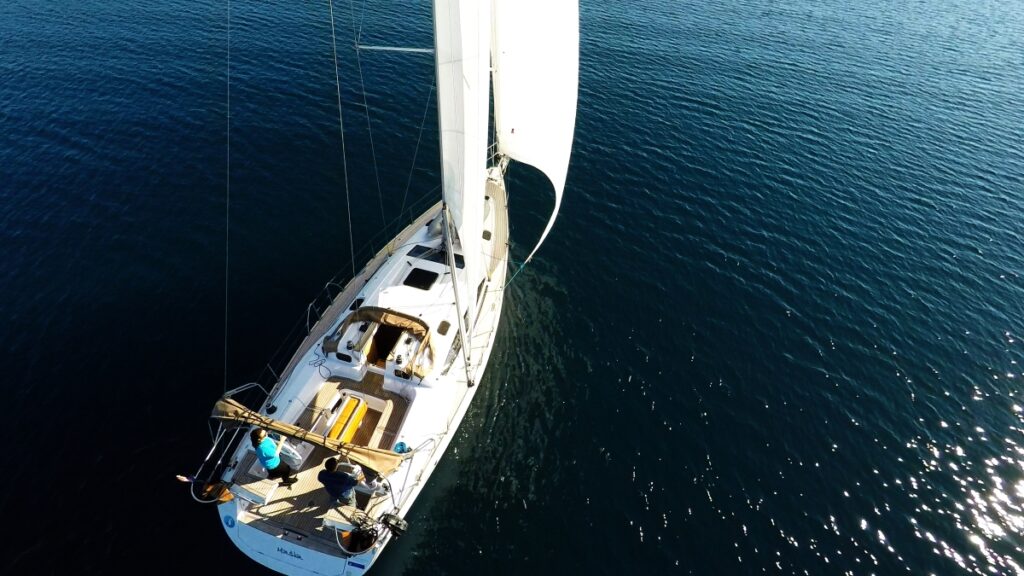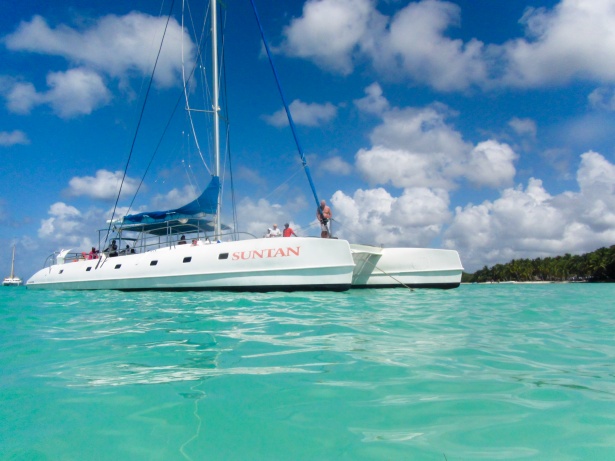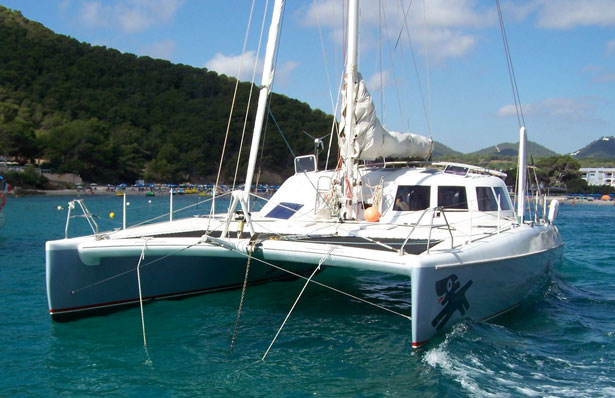When it comes to sailing, the stability and performance of your vessel in various sea conditions are paramount. Now, if you’re curious about multihulled vessels, specifically catamarans, you might be asking yourself, are catamarans good in rough seas?
It’s a valid question, especially considering that the open waters can be unpredictable and challenging.
Catamarans, with their two hulls, offer a distinctive design that can influence how they handle when the waves get choppy and the wind picks up.
Let’s delve into the features that make catamarans a subject of interest for many sailors and explore how they measure up when the sea decides to show its wild side.
Are Cats Good In Rough Sea Conditions?
Yes, catamarans are generally considered good in rough waters. They are known for their stability, which is due to their wide beam and the fact that they have two hulls. This design allows them to remain more level than monohulls, which can heel over significantly. Catamarans also have two rudders, providing additional control and maneuverability in rough seas, which means you can steer the boat more easily and avoid waves better. However, it’s important to note that while catamarans have these advantages, the safety and performance in rough waters also greatly depend on the skill and experience of the crew, as well as the specific design of the catamaran.
Are Catamarans Safer Than Monohulls In Rough Conditions?
Catamarans designed for cruising are considered safe in turbulent waters, yet they pose unique challenges compared to traditional single-hulled sailboats. Let’s see their differences and how each boat performs in rough seas.
Monohulls

Single-hulled vessels incorporate ballast either within or attached to the lower part of the hull. For instance, a 30-foot single-hulled sailboat may carry over a ton of lead as ballast. This significant weight at the base ensures that the vessel sways with the wind and waves but largely stays upright, similar to a pendulum that keeps the vessel balanced.
However, even the most well-crafted single-hulled boats can be tipped onto their sides in severe weather conditions. If the vessel is secured with all openings sealed and doesn’t take on water, it should right itself after rolling.
Yet, if struck by strong winds from the side, a single-hulled boat can capsize. Another risk is when a boat speeds over large waves, potentially causing the bow to plunge into the water on the other side, resulting in a pitch hole—a somersault motion of the vessel. While such incidents are uncommon, they can occur in both sailboats and motorboats.
If a boat is well-prepared for such events, with all ports and hatches sealed, it should be able to recover from capsizing, though not without potential damage to the mast, rigging, and interior. Surviving such an ordeal is possible, albeit distressing.
In the most extreme conditions, no vessel is entirely unsinkable. Yet, both large and small single-hulled sailboats have weathered severe storms, such as typhoons and hurricanes, thanks to their ballast and robust construction.
Catamarans

The dynamics are different with catamarans, which typically lack ballast. Instead, they rely on their broader beam for stability to stay upright. Nevertheless, in sufficiently strong winds, even the broadest catamarans can capsize, an event often understatedly referred to as “turtling.”
Racing catamarans frequently experience capsizing as part of their sailing experience. They use the crew’s weight for stability and are often sailed at steep angles. If a racing Cat capsizes, the crew can manually right the vessel by exerting considerable effort.
In contrast, large cruising catamarans cannot be easily righted once capsized, and they are not designed to sail with their hulls significantly elevated out of the water. Therefore, it’s crucial to reduce sail area early when winds intensify.
Despite being infrequent, accidents do occur, and even the largest catamarans can capsize in extremely strong winds. Additionally, catamarans tend to be faster than monohulls, which increases the risk of pitch-poling.
It is accurate that catamarans typically do not sink because they lack ballast. This implies that in the event of capsizing, your large catamaran essentially turns into a vast, albeit costly, raft, which is ironically more stable when it is upside down.
Nevertheless, the likelihood of a large catamaran capsizing is quite low, and many cruising catamarans have successfully navigated oceans under various weather conditions. With skilled handling and attentive weather monitoring, cruising catamarans can be considered just as secure as their monohull counterparts for cruising purposes.
Often Asked Questions
Q: Is it rare for a catamaran to capsize?
The stability of a catamaran varies with its size. Smaller catamarans, which often lack cabins, can capsize with relative ease, but this isn’t typically a serious issue as they can be righted without too much trouble. Larger catamarans are less prone to capsizing due to more cautious handling, as righting them once overturned is a significant challenge.
The stability of catamarans is largely due to their broad beam or the width between their dual hulls. This design feature contributes to their upright stability.
However, in the event of a capsize, this same feature ensures that they remain stable, even when flipped over. The wide beam, combined with the submerged rigging, keeps the overturned vessel steady in the water.
Q: Why Do Catamarans Capsize?
Catamarans can capsize due to a couple of main reasons:
- Pitchpoling: This is when a catamaran flips end over end, which can occur if the bows of the boat dig into the water, causing the stern to lift and flip over the bows. This is often the result of excessive speed or surfing down a wave that leads to the bows ‘burying’ into the next wave.
- Lateral Capsize: This happens due to wind action, especially when the wind hits the catamaran beam-on, and can be the biggest contributor to catamaran capsizes. It occurs if the windward force overcomes the boat’s stability, which can happen if there’s too much sail for the wind conditions or if a sudden gust hits the boat.
In both cases, managing the sail area and understanding the limits of the catamaran’s stability in varying conditions is crucial to prevent a capsize. Reducing sail in strong winds and being cautious with boat speed can help avoid your catamaran from capsizing.
Q: How do catamarans handle large waves?
Catamarans are stable but can be a bit bouncy in choppy seas because they’re usually lighter and can skip over the tops of waves rather than cut through them. This can make the ride a bit uncomfortable if the waves are coming from all directions, which is known as a confused sea state.
Another thing is that because catamarans have a wider beam, which is the width of the boat, including the space between the hulls, they can be more affected by strong winds. The wind can push on that wide area and make the catamaran harder to control.
Despite these challenges, catamarans are generally considered safe and capable in rough seas, especially if they are designed for ocean crossing. They have a lot of buoyancy, and the two hulls provide a good amount of redundancy – if one hull gets damaged, the other can help keep the boat afloat. Plus, their shallow draft, which is how deep the boat goes below the waterline, means they can avoid some underwater hazards that deeper boats might hit.
In the hands of an experienced skipper who knows how to adjust the sails and speed for the conditions, a catamaran can be a good choice for navigating through rough waters. But like any boat, it’s important to respect the sea and understand the limits of your vessel.
Final Words!
In conclusion, catamarans can be good in rough seas due to their stability, comfort, and design features that can handle challenging conditions. But like any boat, they have their limits and require a knowledgeable and attentive crew to navigate safely through rough waters. It’s always essential to respect the power of the sea and ensure that your vessel is well-maintained and your sailing skills are up to the task, no matter what type of boat you’re on.
Want More Tips?
Subscribe to Cruising Sea newsletter to receive every two weeks the latest posts straight to your inbox!

Daniella has been passionate about travel, the sea, and nature for many years. As a child, she frequently traveled throughout the Mediterranean and continued with her journeys throughout her adult life.
Her experiences have created the desire within her to share her love for traveling with other passionate and adventurers who want to discover beautiful horizons and new cultures.

